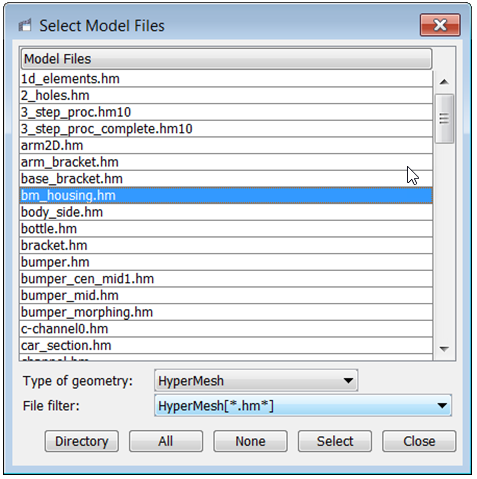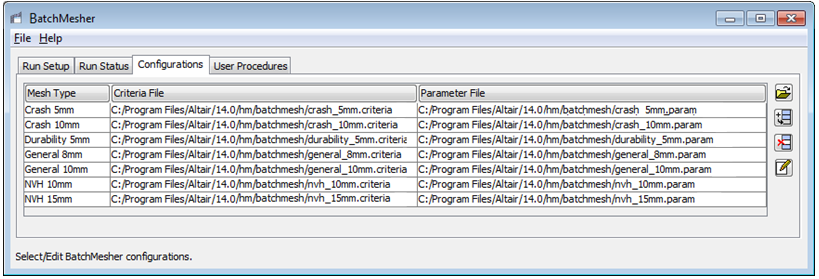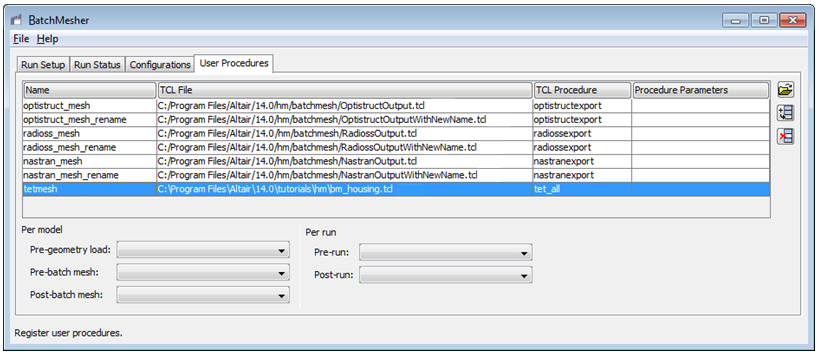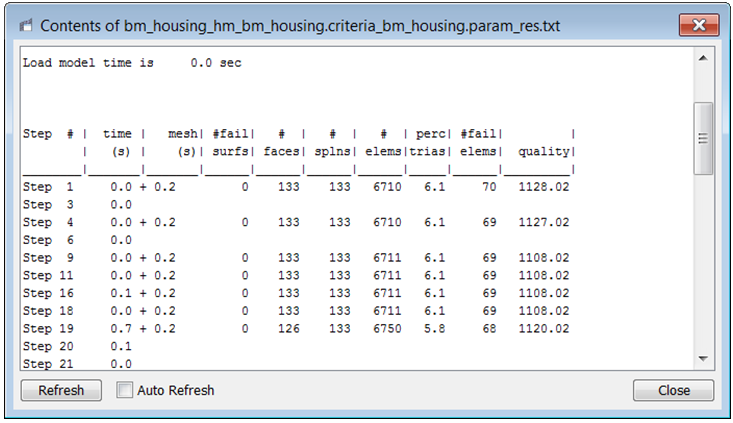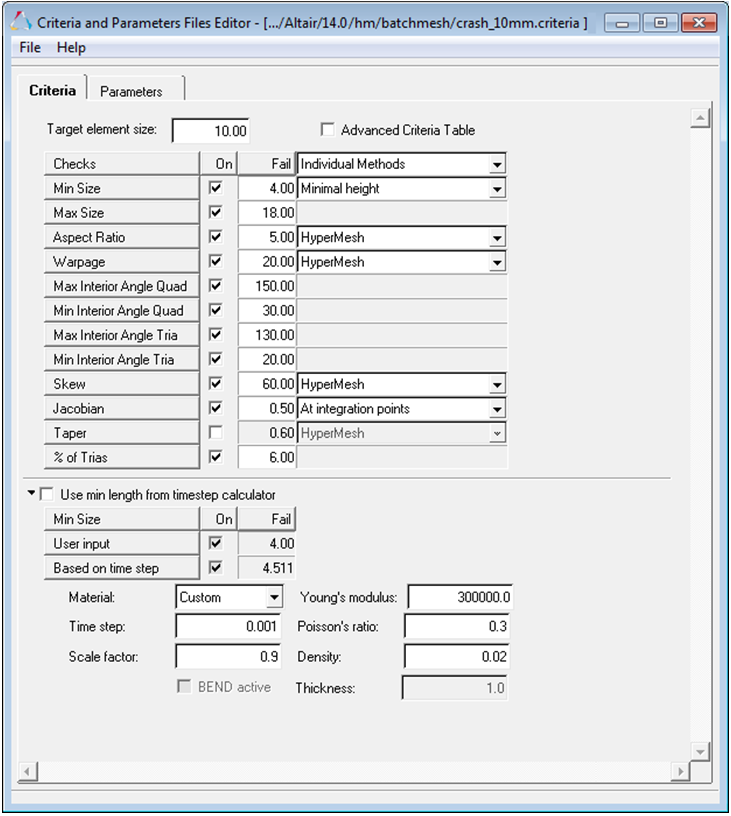HM-3140: Batch Meshing
BatchMesher is a tool that can perform geometry cleanup and automeshing (in batch mode) for given CAD files. BatchMesher performs a variety of geometry cleanup operations to improve the quality of the mesh created for the selected element size and type. Cleanup operations include: equivalencing of "red" free edges, fixing small surfaces (relative to the element size), and detecting features.
BatchMesher also performs specified surface editing/defeaturing operations such as: removal of pinholes (less than specified size), removal of edge fillets, and addition of a layer of washer elements around holes.
All user-defined criteria determines the quality index (QI) of a model. The QI value is used to assess the potential of each geometry cleanup and meshing tool, and apply them accordingly. QI optimized meshing and node placement optimization are performed to obtain the best quality meshing. Final results are stored in a HyperMesh database file.
- Define a configuration for the batch mesh
- Edit the criteria and parameter files
- Set up a simple user procedure for a post-batch mesh run
- part1.hm
- part2.hm
- bm_housing.hm
- bm_housing.criteria
- bm_housing.param
- bm_housing.tcl
Start BatchMesher
In this step you will start BatchMesher.
Define a Configuration for the Batch Mesh Run
In this step you will define a configuration for the batch mesh run.
Set Up a Simple Script
In this step you will set up a simple script to perform a tetramesh on the housing.
Define a Configuration Using Run Setup
In this step you will begin defining a configuration for the batch mesh run using the run setup tab.
Edit the Criteria and Parameter Files
In this optional step you will edit the criteria and parameter files.
